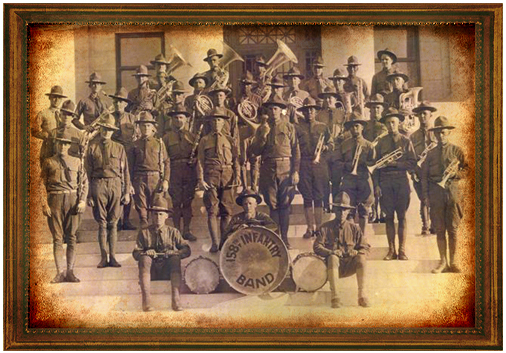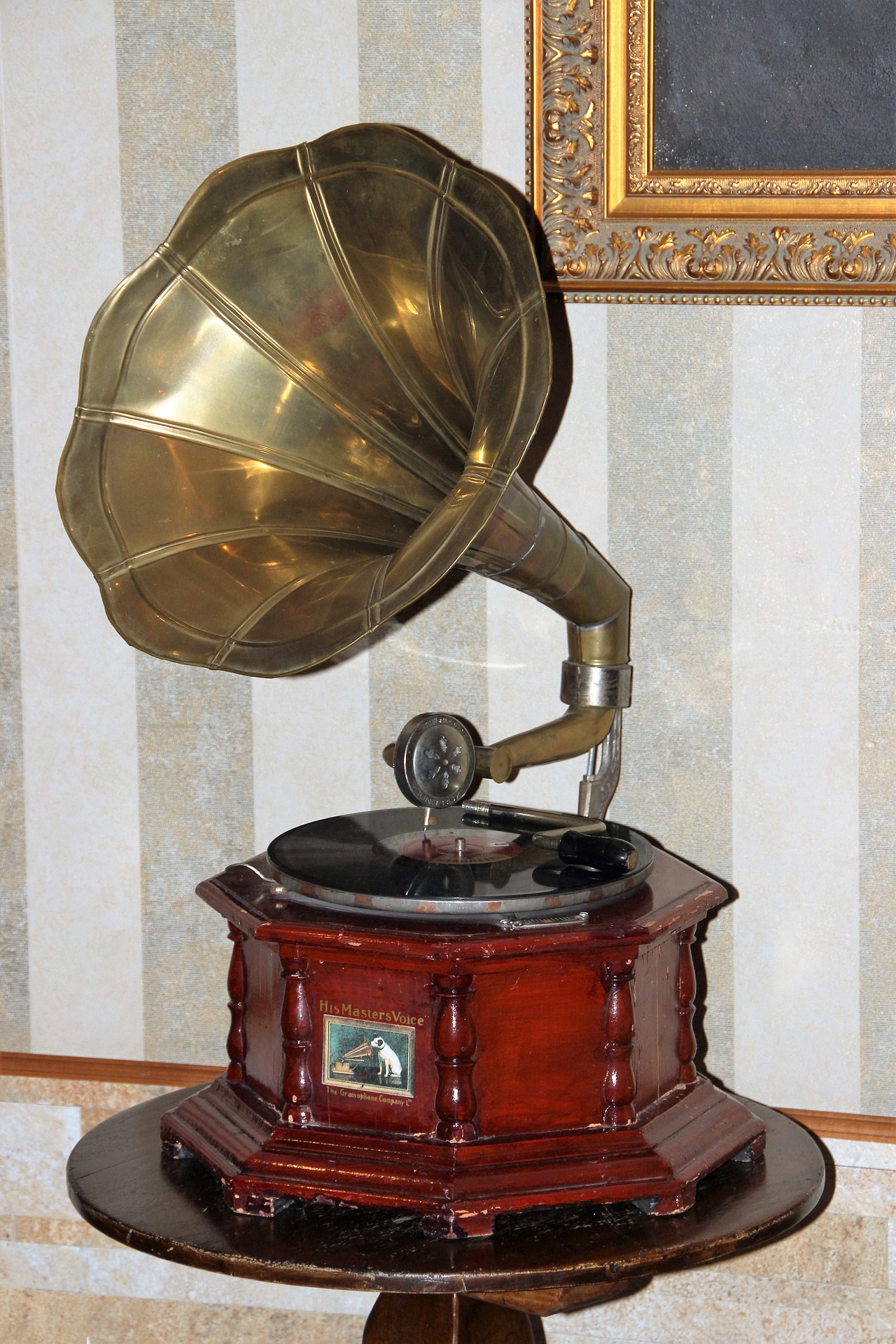
158th Infantry Band
The 158th Infantry Regimental Band was selected as the honor band during President Woodrow Wilson's attendance at the Paris Peace Conference held after WW I. While in France, band members introduced jazz music to the country. The museum secured copies of actual recordings made by the band on November 15th, 1918, featuring four of the most popular tunes of the day.

158th Infantry Band
Following is a description by musician Karl Goetz describing the Pathe Recording Studio in Paris used to record the four pieces. "The studio was very interesting to all," he wrote. "Where the pieces were recorded, a room about 20x25 feet, well lighted up, a pit with chairs mounted on small platforms so that the chairs were level with the floor above the pit. The recording machine was in front of the Director. Drums were directly in front of the machine with a small horn attached. Next was the piccolo, clarinets on each side, cornets, trombones, and bases in the rear. The pieces were played over and recorded several times until the desired results were obtained. I stayed in the studio for about four hours and then went back to the Y hotel."

You can listen to the four pieces recorded at the Paris Pathe Studios almost 100 years ago by clicking the button below.
While stationed with the 9th Cavalry at Fort Robinson, Nebraska, in 1904, Band Master Carl S. Gungle needed to make a trip with his family to a neighboring town. Gungle secured permission from the Post Adjutant to borrow four mules with an ambulance wagon and driver. Shortly after the trip began, one of the mules became sick - forcing the family to return to the fort. Upon reaching the fort, the mule died. At the next post-parade, the band played a new march. Among the trumpets and other brasses was the unmistakable sound of a mule braying. After the review, the Post Commander asked the band Master when he got the new March and wondered, "Didn't I hear a mule's bray in the chorus?" Gungle replied, "Yes, Sir, that's my new composition, The Foundered Mule March." Later, Band Master Gungle, and his band from the Fort Grant Industrial School, accompanied the Arizona National Guard to summer field training at Whipple Barracks outside Prescott, Arizona. The troops liked his March so well that it was adopted in 1913 as the 158th Regimental March. Since then, it has been featured in every parade and ceremony involving Arizona's National Guard units.
While overseas, the band was led by First Lieutenant Albert Ross Etzwiller. After the war Etswiller was band instructor at Phoenix Union High School and active in the Army Reserve. He passed away in Phoenix. In fabricating the Regimental Band exhibit, the curator of exhibits, Lon Wolff, sought a "baton" similar to the one used by band leader 1st Lt A.R. Etzwiler in France during WW I. A visit to a garage sale turned up the type of baton he was looking for. While examining the baton, he was amazed when he found what appeared to be initials on the bottom. He was more surprised when, after a closer inspection, the initials turned out to be A.R.E. The baton was initially purchased at an estate sale in Phoenix. Since bandleader Etzwiler passed away in Phoenix, the baton displayed in the band exhibit belonged to the former bandleader. It may have been used while leading the regimental band in France.
Support the Fort's 2025 Annual Giving Campaign! Please donate today to help us reach our goal of $25,000. Thank you!
